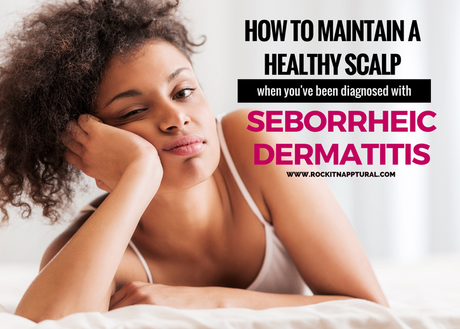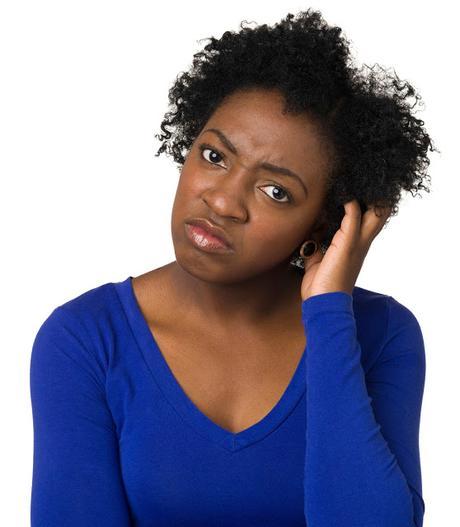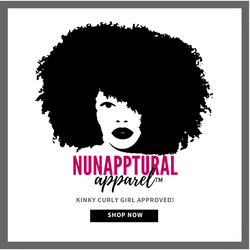
I've been doing some research for a friend who suffers from Seborrheic Dermatitis for products that can help soothe her scalp while protective styling. Seeing the effects of this skin condition up close and personal for the first time can be alarming, but you should know that seborrheic dermatitis is not contagious and it has nothing to do with poor hygiene. One of the most uncomfortable symptoms of seborrheic dermatitis is that is can cause inflammation, irritation, flaky skin and itchy scalp.
What is Seborrheic Dermatitis?
Seborrheic dermatitis is a chronic inflammatory skin condition that causes a red, itchy and inflamed skin and scalp. This form of dermatitis often causes the scalp to become severely dry yet create greasy patches. This then results in excessive flaking of the scalp, raised skin, and bumps on the scalp and hairline.In some cases, the scalp can become extremely greasy but still flake or shed abnormally. Some people get rashes on the face around the nose, the eyelids and even behind the ears. Seborrheic Dermatitis is also considered as a severe form of eczema. There are several types of eczema that can affect the scalp and seborrheic dermatitis is just one.
Common Symptoms of Seborrheic Dermatitis:
- a rash with a reddish color
- raised skin or bumps on the scalp, ears, and/or eyelids
- crusty or scaly skin with white or yellowish color
- severe and stubborn yellowish dandruff
- patches of greasy skin covered with white or yellow crust
- itching or stinging skin in areas where inflamed

But what causes seborrheic dermatitis?
Experts are pretty stumped when it comes to this skin condition and although there is no concrete cause, factors such as poor lifestyle and dieting habits, stress and seasonal changes seem to be a common trigger for many sufferers.Read Also: How to Stop Your Scalp from Itching Like Hell
There have also been implications of the condition being caused by an inflammatory response to a strain of yeast that grows on the body. However, this remains to be proven by medical studies.
People who suffer from central nervous system disorders such as paralysis, nerve palsies and Parkinson's disease are also known to be prone to the development of seborrheic dermatitis. Experts believe this is caused by the buildup of the skin's sebum due to the immobility of the patient, but who knows.
Seborrheic Dermatitis presents itself in periods of exacerbation and remission. It affects between 1 and 5 percent of the population of all races, ages and nationalities. Seborrheic Dermatitis in infants is also referred to as "cradle cap". Genetics also seem to be a contributing factor of the condition.
Is there a Cure or Treatment for Seborrheic Dermatitis?
Although there is no known cure for stopping seborrheic dermatitis in its tracks, it is treatable and can be manageable for long-term sufferers with common flare-ups. Physicians usually prescribe antibiotics, medications and topical creams that contain cortisone, and even steroid medications.But some people don't like to continue using these harsh medications over extended periods of time. Some people have complained that the steroid based medications, although extremely helpful in alleviating symptoms, causes the skin to become thin and fragile.
Over-the-Counter Shampoos that May Help Soothe Seborrheic Dermatitis Symptoms
There are alternatives to using steroidal topicals, creams ands shampoos. Some over-the-counter shampoos may help alleviate symptoms for mild to moderate flare-ups. Shampoos containing zinc pyrithione, salicylic acid, and selenium sulfide can help treat mild cases of severe dandruff and flaking of the scalp from seborrheic dermatitis.Recommended Shampoos:
- Philip B. Anti Flake II Relief Shampoo
- Selsun Blue Moisturizing Dandruff Shampoo
- DHS Zinc Shampoo
- Head & Shoulders Clinical Shampoo
- Neutrogena T/Sal Therapeutic shampoo
- DHS Tar Shampoo
- DCL Scalp Therapy Shampoo
- Tarsum Shampoo Gel
- JASON Dandruff Relief Treatment Shampoo
Read Also: 7 Herbal Hair and Scalp Rinses for Fabulous Natural Hair
Natural and Organic Alternatives to Help Soothe Symptoms of Seborrheic Dermatitis
1. Tea Tree Essential Oil
Tea tree oil is very popular for its ability to fight bacteria and fungal infections. It is widely used for its powerful antimicrobial, anti-fungal and antibacterial properties.2. Coal Tar Shampoo
Coal tar works well in treating Seborrheic Dermatitis because it contains a compound that causes the scalp to shed dead skin cells from the first layer of skin, and it slows the growth of new skin cells.
3. Aloe Vera Gel
Used to soothe irritated and inflamed skin, Aloe Vera helps reduce irritation in the scalp and stop the itch. Its cooling sensation helps soothe symptoms and provide relief for itchy, inflamed skin.
4. Garlic Juice
Garlic has potent anti-fungal and antimicrobial properties. It's powerful in fighting bacteria and fungus when applied topically, and although it has not been medically proven, many people swear that garlic has helped alleviate symptoms of Seborrheic Dermatitis.
5. Neem Oil
Popular for is antibacterial and anti-fungal properties, Neem oil has been used for centuries to treat various skin ailments. Neem oil has anti-fungal, anti-parasitic, anti-inflammatory and antibacterial properties that are great for treating scalp infections. Neem oil contains nimbidin and nimbin compounds that help to relive redness and swelling of the scalp while healing damage.
Read Also: Is Scalp Damage Stunting Your Hair Growth
6. Oregano Oil
Oregano oil has one of the most powerful anti-fungal properties of all the essential oils. It can kill yeast, bacteria and all sorts of fungal infections. Oregano oil works quickly in reducing the symptoms of Seborrheic Dermatitis. There are no side effects when used topically and it can be used directly on the scalp when mixed with a carrier oil. Oregano oil also has antimicrobial, antibacterial, and antiviral properties which makes it an extremely versatile and beneficial essential oil to have stocked.7. Apple Cider Vinegar
Apple cider vinegar has been used to effectively treat seborrheic dermatitis for years. It is an acidic solution that helps to soothe the skin from cracking and itching. Using an apple cider vinegar rinse and massaging your scalp may help soothe symptoms of seborrheic dermatitis on the scalp.Although there is no cure for Seborrheic Dermatitis, there are treatments that can help alleviate and reduce symptoms. As always, be sure to consult with your physician or dermatologist before starting alternative treatments.


